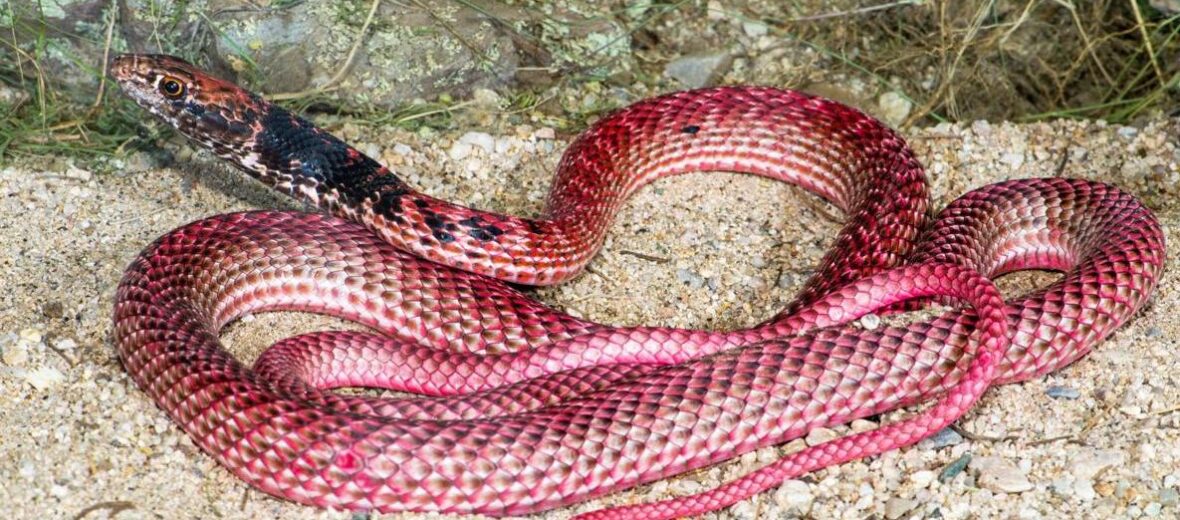
There are 7 known subspecies of coachwhip snakes whos demographic extends from the west coast to the east coast throughout the southern U.S. The Arizona coachwhip is found across all of western and southern Arizona at elevations from just above sea level to around 6,000 feet. Desert scrub communities, semi-desert grassland, and the lower reaches of interior chaparral are where you’ll find this snake. It’s also found on dune fields, desert flats, foothills, and sloping bajadas. These snakes aren’t venomous, but they do have speed and an attitude.
First the Stats…
Scientific name: Masticophis flagellum
Weight: Up to 1 lb.
Length: Up to 8 feet
Lifespan: Up to 16 years
Now on to the Facts!
1.) These snakes are often found during the hottest parts of the day, when other snakes are seeking shelter from the hot sun.
2.) They hunt with their head lifted high off the ground, as they slither about in search of that next meal.
3.) Even though coachwhips are typically terrestrial (spend most of their time on the ground), they are quite capable of climbing shrubs, cacti, and trees.
4.) The coachwhip brumates (hibernates) during colder winter months.
5.) Coachwhips prey on lizards, snakes (including rattlesnakes), frogs, toads, mice, insects, bats, birds, and even small turtles.
But wait, there’s more on the Arizona coachwhip!
6.) There are 3 known subspecies: Sonoran coachwhip, lined coachwhip, and the red racer.
7.) One of the best-known myths about these critters is that they will chase down people and whip them to death, that’s false.
Did you know…?
They got their name due to the snake’s resemblance to the braided lashes of an 18th-century British coachman’s horsewhip.
8.) Whips and racers are fast and waste no time darting away from predators and humans!
9.) If the predator persists, the coachwhip will curl up and feign death.
10.) Mating happens in Spring and a clutch of up to 24 eggs is laid in the summer.
But wait, there’s still more on the Arizona coachwhip!
11.) If captured, they will actively and aggressively bite and defecate on their captor, until they are released.
12.) These are non-venomous colubrids. They have many needle-like teeth that will cause multiple lacerations but they don’t have the ability to envenomate.
Now a Short Arizona Coachwhip Video!
Also, check out the Critter Science YouTube channel. Videos added frequently!
Want to suggest a critter for me to write about? Let me know here.



